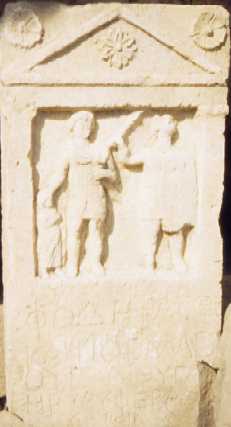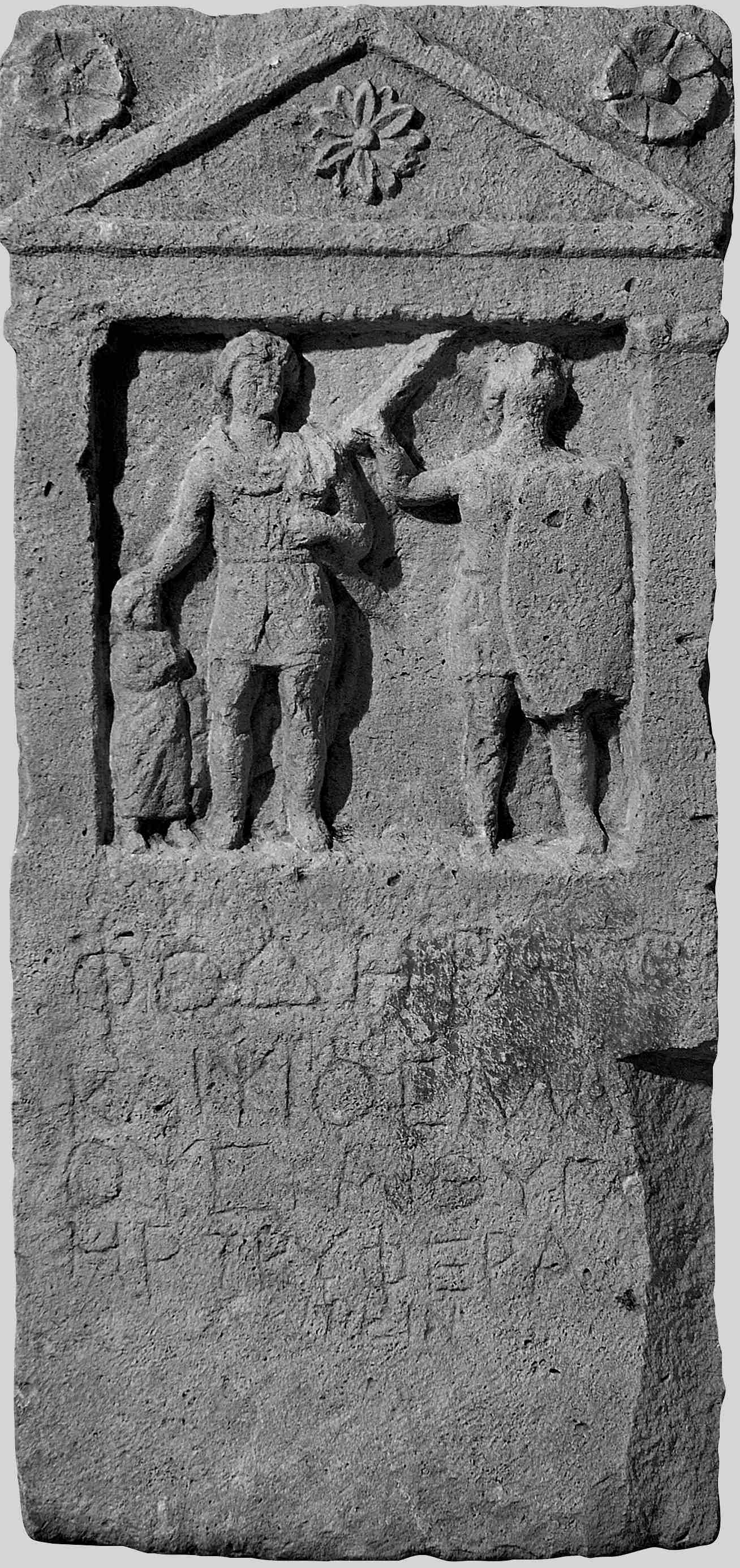Back to the main page


Year 1994 Year 2004
Inscription of the Phoderago (KL 1839)
In the Lapidary of the Kerch Museum is present a funerary stelae, (inv.
No KL 1839) made from local limestone, founded by certain Phoderago. It is
decorate with a relief and five lines of Greek inscription. Object is 86,8 cm
high, 45,5 cm wide and 14,5 cm thick, and was bought by the Kerch Museum on
1991-06-22 from private collector for 100 roubles. According to informations,
which I have obtained from professor E. Jakovenko, former (1992) director of
the Kerch Museum and Mrs. T. Matkovskaia[1], head of the Kerch Lapidary, stelae was found about 500 m north from
the railway station, in the northern area of the Kerch peninsula.
The finial is decorating with rosettes and tympanum with a big rosette
in the middle. Below we can see representation of a warrior posed with an
extended sword and shield. Beside stay another warrior without shield and with
sword putted in the scabbard, with his right hand stretched over the head of
the third person – a child. The field of the relief is closed on both sides by
pillars. Below the relief is placed the field of the inscription with the Greek
text divided in five lines. Shapes of the letters are quadratic (sigma, eta). Letters are
between 5-2,6 cm high and interval between lines is about 1 cm.
Preservation of the stelae is generally bad.
Thanks to palaeographic[2] and formal analogies with another reliefs[3] we may date this stelae for I-II cent. AD.[4]
Text of the inscription goes as follows: